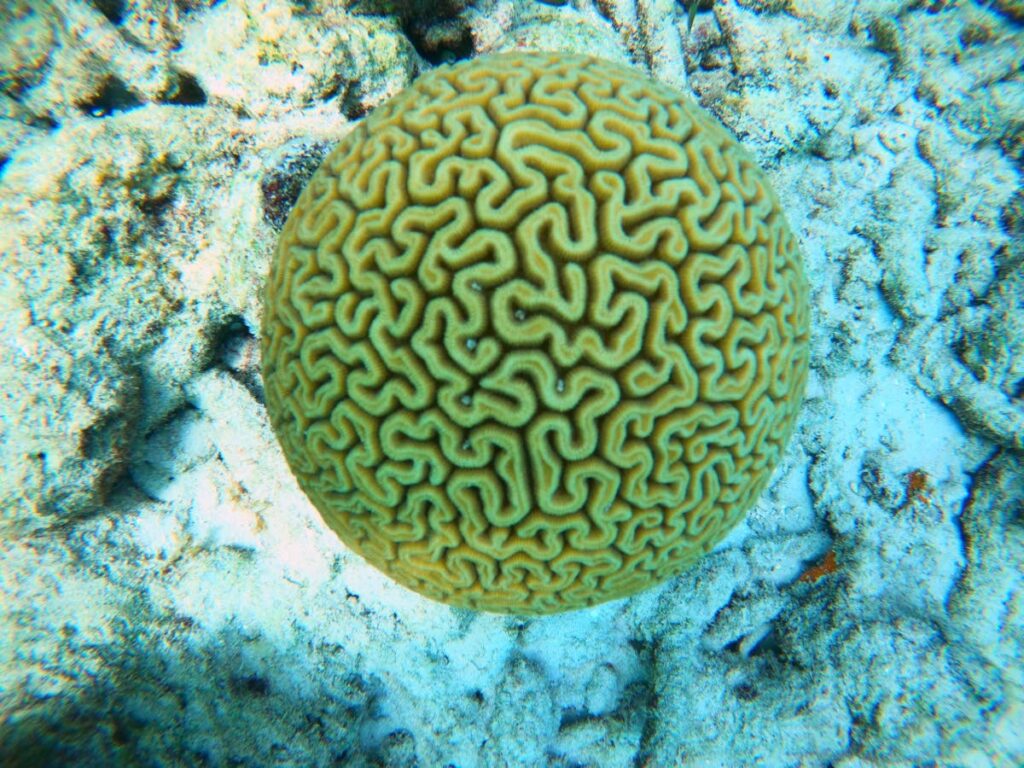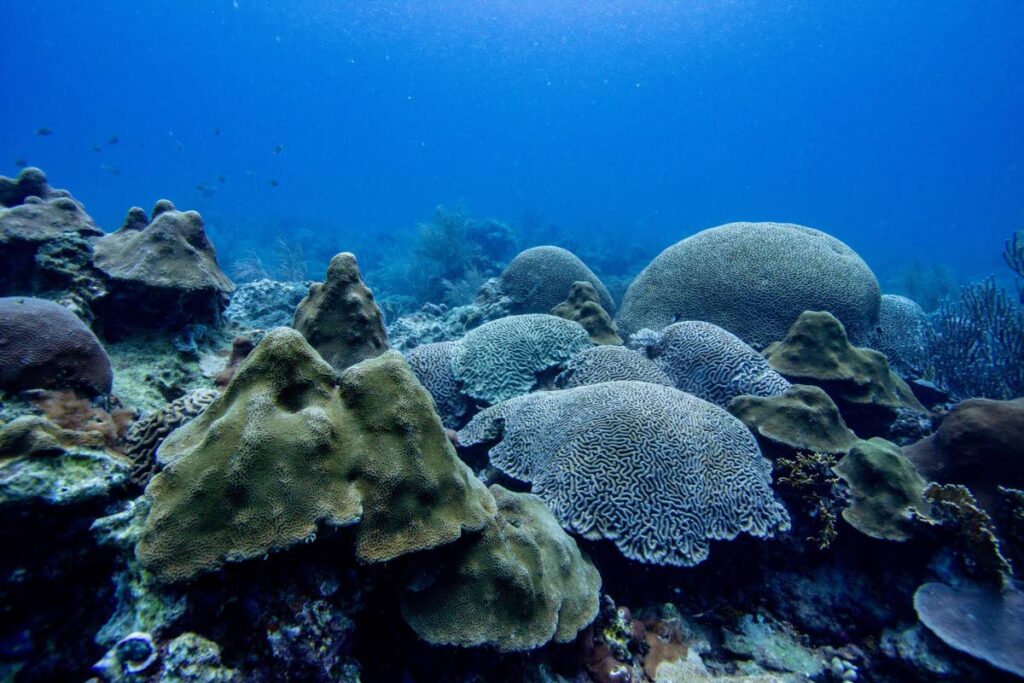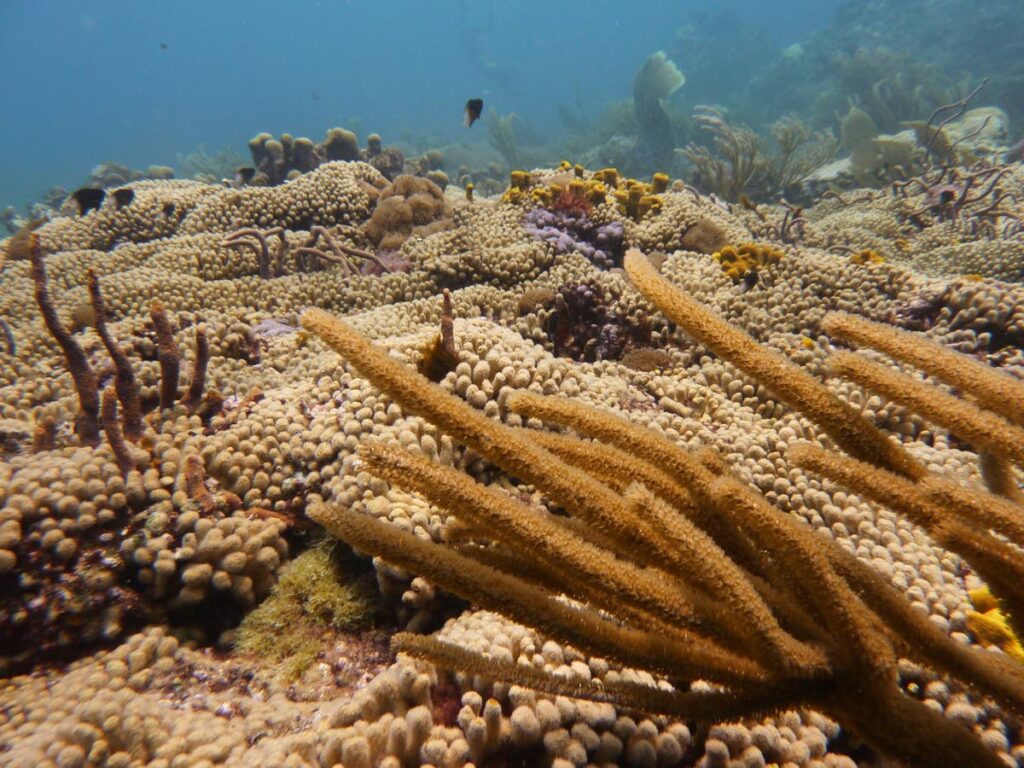The secret lives of corals

Dr Anjani Ganase, coral reef ecologist, discusses little known facts of the undersea animals that are indicators of healthy oceans and coasts
Mysteries of coral reproduction
Not much is known about coral reproduction. Most coral species synchronise mass spawning releasing sperm and eggs into the water column. This event would be timed to seasonal and lunar cycles for optimal fertilisation. However, little is known about dynamics of the sperm and eggs when they are released into the water column. How does a sperm increase its chances of finding a suitable egg to fertilise in a sea of 100 million eggs and sperm of many different species of corals and other organisms? Turns out there are universal strategies that coral gametes may use to find their mate. Eggs release unique chemical signals that trigger sperms to become motile. Echinoids (sea urchin and sea star eggs) are known to release calcium ions into the water to trigger sperm motility and a similar method is likely used by coral eggs. A recent study looked at gene expressions in eggs and sperm of a Hawaiian coral species. What they found was that there were similar gene expressions in the eggs and sperm in the water column. Although the similarity meant there may be some limitations with respect to active strategies for maximising fertilisation, there were expressions that potentially allowed the sperm and egg to recognise compatibility, similar to the echinoids. Much more work needs to be done to unravel the mysterious coral reproductive cycle.
Not all disturbances are the same
Scientists in Moorea Island, French Polynesia in the Pacific are looking into how the coral reef structure affects the recovery potential of a reef in the wake of a disturbance. There are two main types of acute devastations that coral reefs face today – cyclone damage and coral bleaching. In the Pacific, scientists observed that coral reefs damaged by cyclones tend to recover much quicker than reefs damaged by coral bleaching. They related this to differences in the reef structure after each disturbance.

For coral bleaching, most dead coral skeletons remain on the reef surface – especially the many branching morphologies common to the region. In the wake of a cyclone, these branching coral skeletons are often scoured off the reef pavement leaving a cleaner and smoother surface. After a major coral mortality event, fleshy macroalgae is the first to colonise, and the presence of branching skeletons on the bleached reef provide micro spaces that protect the macroalgae from being grazed by herbivores. As a result, the algae persists much longer than it should and even limits the recruitment by young corals. Therefore, the type of disturbance a coral reef experiences has a lot of implications for both the recovery process and the management required to assist. Marine management should therefore be sensitive and dynamic.
Coral disease defence
Coral species in the Caribbean have been hit by an onslaught of disease outbreaks, rapidly wiping out coral species in the region. This started with the white-plague disease in the 1970s, which killed up to 97 per cent of all the branching Acropora species across the region, including those in Tobago. Fifty years later, scientists are still investigating the mechanisms that result in coral infection and death, as well as the mechanisms that lead to coral resistance and immunity. Researchers from the University of Texas observed the gene expressions of seven Caribbean coral species that were infected by white plague disease. They tracked the physical progression of the disease and compared the gene expressions of the coral cells. They were able to identify and relate the susceptibility of the coral to the disease to specific gene expressions associated with typical immune responses. Firstly, as expected, they found that the formation and progression of the lesions on the coral tissues correlated with the natural immune response of the coral. However, slower lesion progression was associated with the expression of genes that worked to mitigate intra and extra- cellular damage with the trafficking of more proteins and more cellular transport of material needed to maintain healthy and stable cell states.

Cells that underwent autophagy, which is the systematic cell death that involves cellular digestion – essentially the starvation of the cell organelles by limiting its resources – results in the starvation of the microbes as well and in slower spread of the disease. Greater activity of autophagy was associated with more resistant strains. This strategy is different from apoptosis, which is another mechanism of programmed cell death. The rate of apoptosis, regulated by gene expressions, determines how susceptible the coral is to the disease and the progression of lesion formations. These investigations into the micro-world of coral biology are critical in determining mechanisms for mitigating coral disease outbreaks, as cellular responses are often driven by the corals environmental setting that encourages the preference of one type of immune response over another.
Coral ‘smells’ indicate reef health
Similar to many other organisms, corals emit gases for a number of ecological reasons, many of which are unknown to us. Typically, the smells may be used in species-to-species communication, perhaps to ensure reproductive alignment or to warn against grazing predation, or as defence against predation. What scientists from University of Technology of Sydney found was that the wide array of smells released by corals were drastically diminished during a heat stress event. Therefore, “fewer smells” may be a good indicator that corals are not functioning properly or are unhealthy. This may present itself even before they are noticeably damaged from coral bleaching. This is a subtle but useful indicator of reef health, similar to measures of reef sounds which is also useful to assess reef health and productivity.


Comments
"The secret lives of corals"